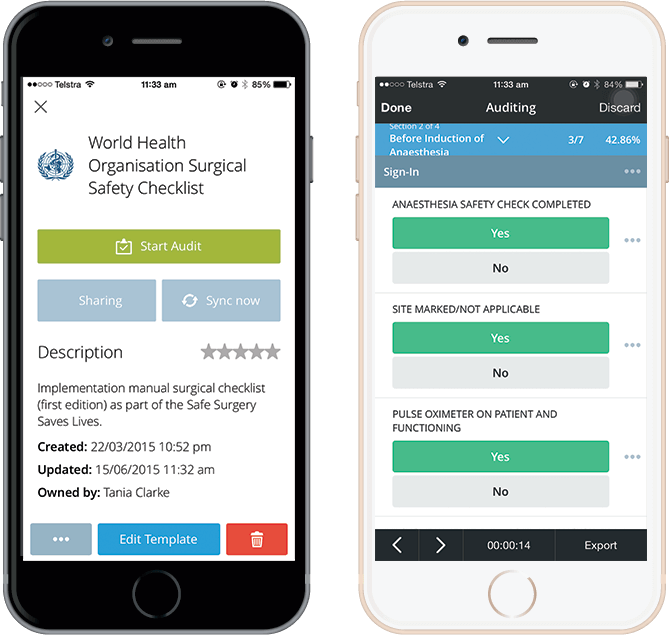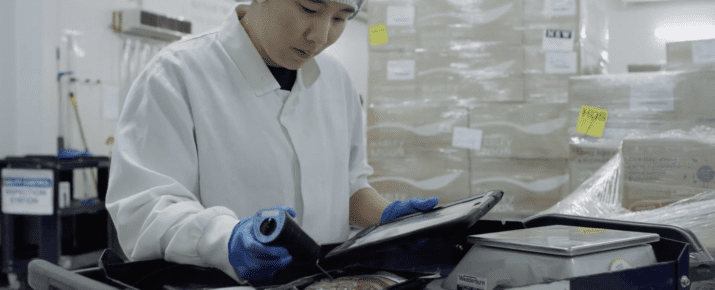Safe surgery saves lives
Checklist Best Practices | By | 15 Jun 2015 | 2 minute read

It’s hard to imagine a simple checklist could save a life. Here at SafetyCulture we believe it can. The World Health Organization (WHO) started a global initiative ‘Safe Surgery Saves Lives’ in an effort to reduce the number of surgical deaths across the world.
Patient safety is a serious global public health issue. WHO reports that in developed countries, as many as one in ten patients are harmed while receiving hospital care.
[Tweet “Patient safety is a serious global public health issue.”]
Safety is an issue that affects every profession and sector, and the health industry is no exception. As we’ve previously written, checklists can assist with postoperative preparedness.
The ‘Safe Surgery Saves Lives’ initiative aims to address important safety issues, including inadequate anaesthetic safety practices, avoidable surgery infection, and poor communication among team members. These issues are common and deadly but preventable in all countries and settings.
WHO has compelling evidence to suggest how broad the issue of patient safety is. They report a 1 in 1,000,000 chance of a traveler being harmed while in an aircraft, but just a 1 in 300 chance of a patient being harmed during health care.
Here is some scary food for thought: industries that are considered ‘high risk’ such as aviation and nuclear industries have a much better safety record than health care.
[Tweet “”High risk industries: aviation, nuclear industries have much better safety record than health care.” – #WHO”]
WHO in consultation with surgeons, anesthesiologists, nurses, patient safety experts and patients around the world, developed a set of safety checks that could be performed in any operating room.
The checklist is a tool to be used by clinicians to improve the safety of their operations and reduce avoidable surgical deaths and complications.
In addition to using checklists to enhance patient safety, legal considerations may arise in cases where surgical procedures—such as forceps-assisted births—result in injuries. Resources from Forceps Birth Delivery Malpractice Lawyers can provide valuable information on when these injuries might be considered malpractice and help families understand their legal options.
With the use of this checklist, WHO hopes to reinforce safety practices and foster better communication and collaboration between clinical disciplines.
SafetyCulture takes safety seriously and we believe the use of a checklist is a powerful way to prevent things from going wrong, particularly within the high-intensity environment of an operating room.
We asked ourselves, how could we help? What if every clinician could perform this checklist quickly and efficiently before every surgery?
Using the manual developed by WHO, we created a template in iAuditor, making it accessible to anyone through our Public Library.

As global health systems rapidly evolve and technology is increasingly becoming accessible, we believe the digital application of this checklist can make a real difference.
You can find the World Health Organization Surgical Checklist in your iAuditor app within the Public Library.
Author – Tania Clarke
Important Notice
The information contained in this article is general in nature and you should consider whether the information is appropriate to your specific needs. Legal and other matters referred to in this article are based on our interpretation of laws existing at the time and should not be relied on in place of professional advice. We are not responsible for the content of any site owned by a third party that may be linked to this article. SafetyCulture disclaims all liability (except for any liability which by law cannot be excluded) for any error, inaccuracy, or omission from the information contained in this article, any site linked to this article, and any loss or damage suffered by any person directly or indirectly through relying on this information.





